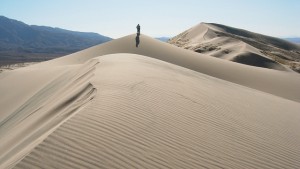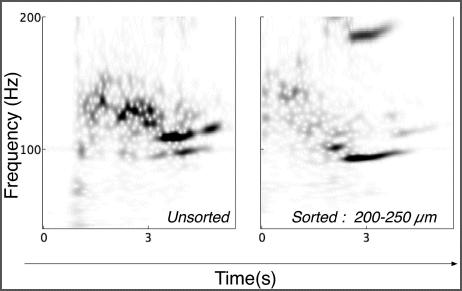
One of the coolest things I've done in my geological explorations was to make the trip to the Kelso Dunes, deep in the Mojave Desert and make the dunes sing. All I had to do was huff and puff my way to the top of the highest dune and then start the fine sand avalanching down a slip face. After a few seconds a fuzzy, baritone hum began to emanate from the body of the dune that lasted while the sand poured down, then gently died away.
Singing sands, also known as booming dunes, were once the stuff of legend. Marco Polo reported them from the steppes of central Asia. Nineteenth-century travelers and scientists, including Charles Darwin, observed them. Twentieth-century researchers recorded them, played with their sand in the lab, and tried mathematical models on them. This week a new paper is coming out in Geophysical Research Letters that marks a new proposition in the genteel argument among scientists over singing sand.
Very few dunes can sing—maybe 30 in the whole world. California has four of them: the Eureka Dunes in Death Valley, Panamint Dunes in Panamint Valley, Dumont Dunes north of Baker, and Kelso Dunes southeast of Zzyzx. The key factors seem to be very clean sand of a consistent size, very dry conditions and a good-sized slope at its angle of repose. A gentle avalanche of sand down the slope, triggered by the wind or by humans, sets off the sound. Researcher Stéphane Douady demonstrates the technique in this YouTube recording.
There has been a flurry of recent research into booming dunes. A team from Caltech led by Nathalie Vriend studied the California dunes and proposed in 2007, in a paper titled "Solving the Mystery of Booming Sand Dunes," that vibrations stirred in the falling sand reverberate within the layers inside the dune to produce the moaning tones, much as an alpenhorn produces its low tone from vibrations of the player's lips. Vriend and her thesis advisor, Melany Hunt, were invited to write a broader treatment of the subject in the prestigious Annual Reviews of Earth and Planetary Science in 2010.
